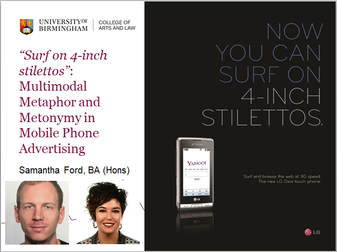methodological challenges in identifying and classifying multimodal instances of metaphor and
Both plenary speakers gave some excellent advice to postgraduate pursuing a career in academic. Hunston implored students to have courage for their convictions and research; to recognise when a good idea is indeed a good idea rather than putting their research down when discussing it with others; give themselves space to think and for those all-important reflections and lightbulb moments; and to focus on the real-world relevance and impact of their research. Deignan encouraged students to be more confident and ambitious but realistic toward their studies and emergence in the academic world; to not take criticism personally when inevitably experiencing harsh critiques and/or rejections from publishers and reviewers (and even fellow academics!); and to always ask and seek opportunities, and taking them when they arise rather than waiting from them to come to them. The day saw a variety of different studies presented throughout the day. Some of the highlights are described as follows. Chun Lui stressed the importance of investigating multimodal instances of verbal and non-verbal politeness using the Multimodal Interaction Analysis framework (Norris, 2014). David Callaghan presented part of his thesis about hedges that can be stacked together in political discourse as a form of pragmatic irony. Emily Trivette discussed results from her PhD survey that revealed opinions from the LGBTQ+ community concerning how gay labels are represented on TV. She demonstrated that the media have a huge responsibility to manage the representation of stereotypes, particularly of the LGBTQ+ community. James Henry gave an intriguing insight into evaluations in academic writing by business students, and demonstrated the use
supportive environment and left them feeling
encouraged, confident, and ambitious in their emergence into the academic world. © Copyright Samantha Ford 2018
0 Comments
Leave a Reply. |
Categories
All
Archives
October 2022
|
||||||||||||
Photos from wuestenigel (CC BY 2.0), wuestenigel



